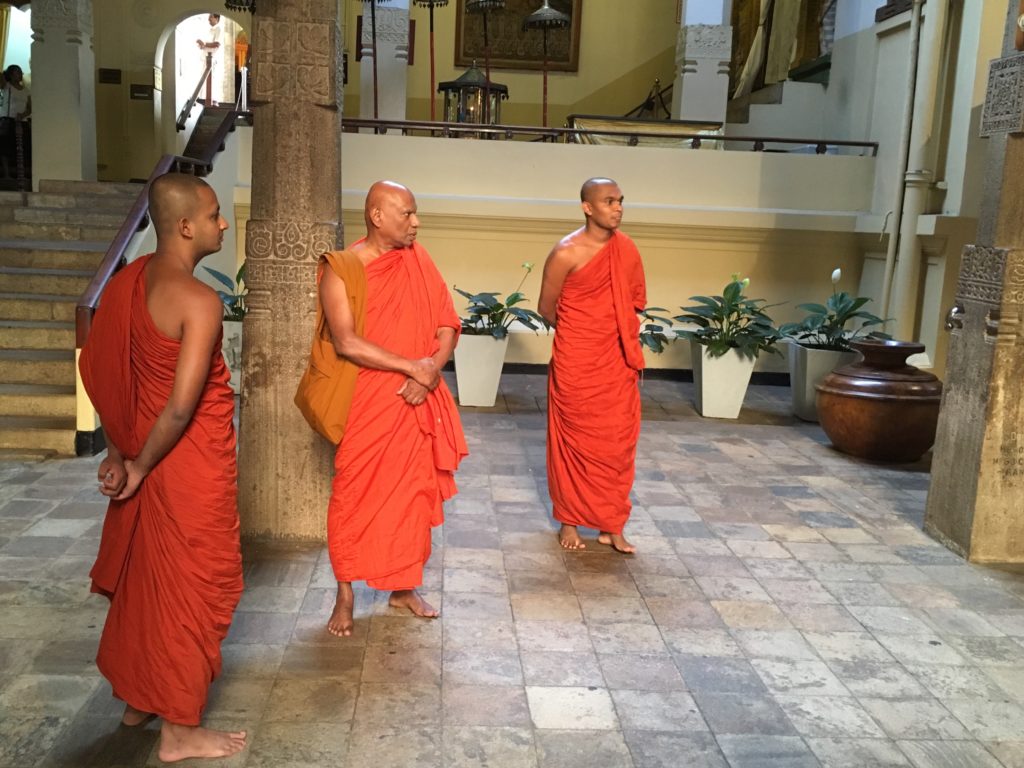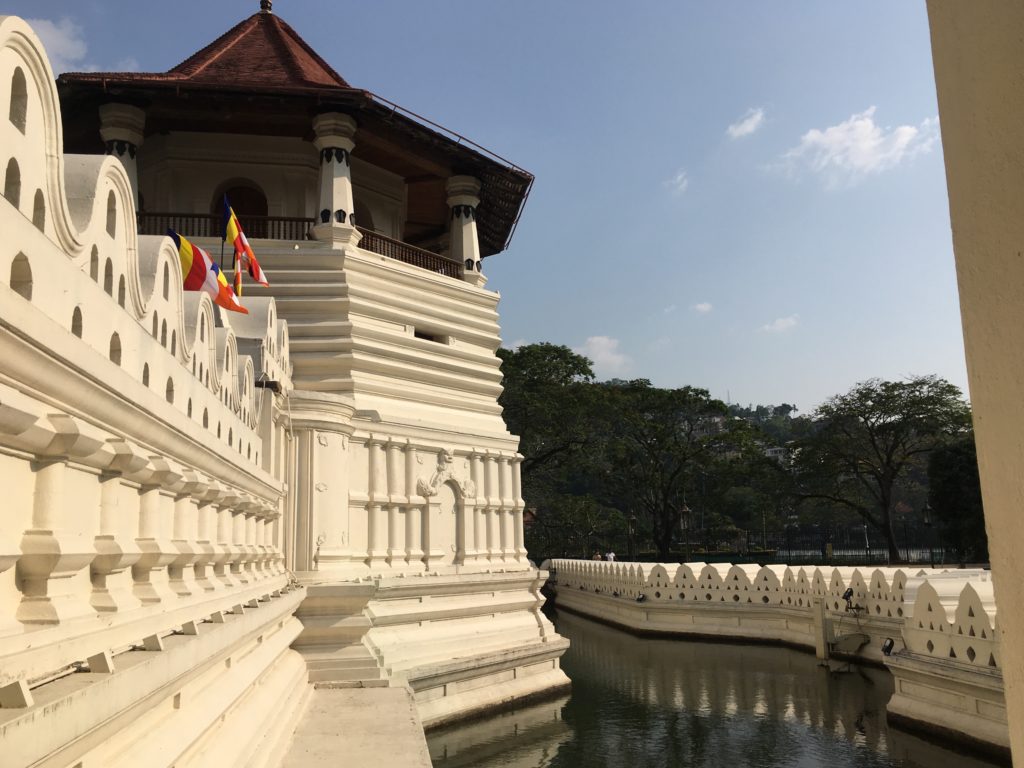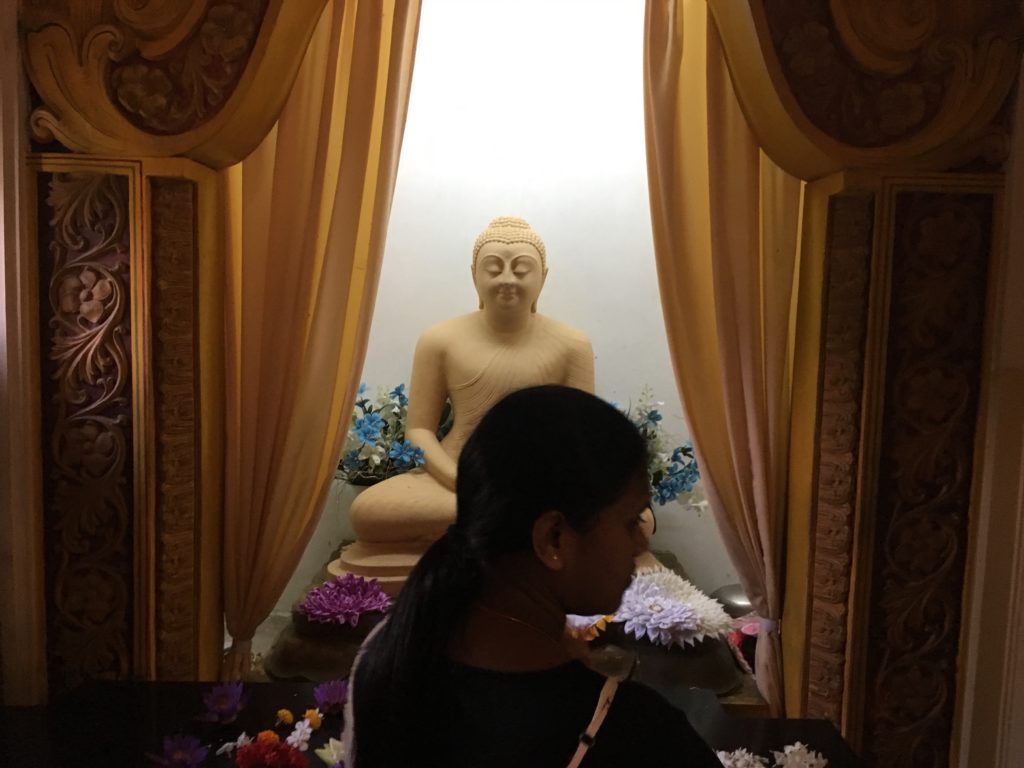
Kandy- For years I’ve wanted to visit this city in central Sri Lanka and its nearly mythical Sri Dalada Maligawa (Temple of the Sacred Tooth Relic) where one of Siddhartha Gautama’s four canine teeth is stored for veneration by Buddhists here and those the world over. Buddhism here is very different than much of what was once popularised in the West by the Beastie Boys and other pop culture elites in the heyday of the Tibetan Freedom Concerts. There is no idolatry of the Dalai Lama here to be certain in the mode of Vajrayana . Like that in Thailand, Sri Lankans follow the ancient Theravada school of Buddhism.

Having grown up in a principally Irish Catholic milieu and having spent much of my adult life immersed in the political currents of Sunni and Shia Islam, my knowledge of the Buddhist world isn’t perhaps what it should be. My knowledge of Sri Lanka is, or was I should say, through the prism of the 26-year war between the state and the Liberation Tigers of Tamil Eelam (LTTE). The LTTE was made up of ethnic Tamils from the county’s north and east, were pioneers of suicide bombing and proto-terror state building. On 25 January, 1998 the LTTE’s ‘elite’ Black Tigers detonated a massive truck bomb in the temple complex that killed 17. The importance of this place in Sri Lanka’s history and politics cannot be overstated. It is thought that whoever controls the home of the tooth relic is who governs the state. So the 1998 LTTE attack was not just aimed at the Sinhala-speaking Buddhist identity of the Sri Lankan government and military, it was to symbolise that the nation-state’s grip on power was tenuous if it could not adequately secure this ancient syncretic material symbol melding spirituality and power.
As to how far Sri Lanka has come in terms of increasing state stability. nine years before the LTTE attack, the Janatha Vimukthi Peramuna (JVP) was waging a deadly insurgency and bombed the temple complex on 8 February 1989. This incident could not be attributed to religious difference or a bitter linguistic schism underwritten by the country’s 1972 constitution where upon Sinhala was enshrined as the official language as the country was transitioning from the Dominion of Ceylon to the Republic of Sri Lanka. No, the JYP insurrection was based along the overwhelmingly ethnic-Sinhala southern coast where I’ve just spent a week. It began in 1987 (with a history of political violence in a failed 1971 uprising) as a Marxist-Leninist militant outfit that sought the violent overthrow of the government in Colombo and was concomitant with the humiliating arrival of the Indian Peacekeeping Force (IPKF) in 1987. The posture of the IPKF stoked and angry form of nationalism among Sinhalese leftists who felt Colombo had forfeited the security integrity of the country by inviting a foreign military presence. Thus the Sri Lankan Armed Forces then had to deal with the LTTE and JVP insurgencies in deadly simultaneity. The Indian state was seen as at least somewhat complicit with the LTTE insurgency owing to its safe haven in Tamil Nadu and the vastly unpopular IPKF departed here by March 1990.

©2019 Derek Henry Flood
So this place of tranquility, of immense history, of the Buddha that so many admire, has seen serious turmoil. We are now (as of mid-May) ten years out from the end of the war with the LTTE and 30 years on from the JVP attack and Sri Lanka is certainly at peace aside from small, contained bouts of inter-communal violence. Society needs time to heal from the deep wound of decades-long polarising ethnic fragmentation.